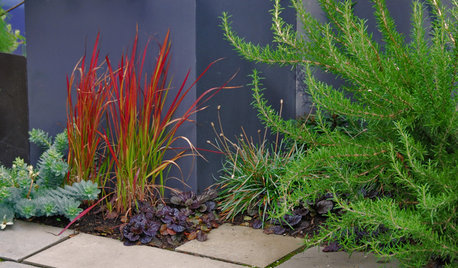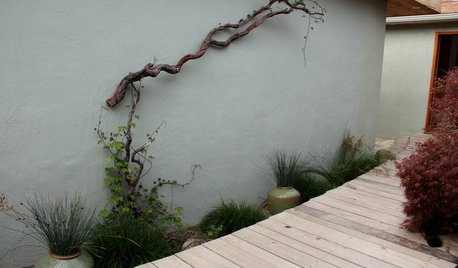Is what I am seeing Flame Grass?
wyndwalkr
16 years ago
Related Stories

MODERN HOMESHouzz Tour: Seeing the Light in a Sydney Terrace House
A narrow row house gains lots of interior sunshine and a connection to the outdoors without sacrificing privacy
Full Story
HOUZZ TV FAVORITESHouzz TV: See How Early Settlers Lived in This Restored Pilgrim House
Passionate restoration and preservation efforts give a 1665 home an honored place in the present
Full Story
DECORATING GUIDESChevron, Herringbone, Flame Stitch: What’s the Difference?
Make the right point by learning the differences among these 3 popular zigzag patterns
Full Story
RED FOLIAGEGreat Design Plant: Japanese Blood Grass
This dramatic, ruby-tinged grass bridges the gap between red and green, short and tall plants
Full Story
DECORATING GUIDESSee How Wabi-Sabi Can Bring Harmony and Beauty to Your Home
Create your own wabi-style style with beautifully weathered, humble materials around the house
Full Story
DESIGNER SHOWCASESSee the Daring Designs at the 2013 Kip's Bay Decorator Show House
New York designers show their latest creations in a fashion show for the home
Full Story
LANDSCAPE DESIGNSee Chelsea Flower Show Ideas Flourishing in a Real Backyard
Can trends in high-design show gardens translate to everyday yards? The proof is in the plantings
Full Story
GREEN BUILDINGHouzz Tour: See a Concrete House With a $0 Energy Bill
Passive House principles and universal design elements result in a home that’ll work efficiently for the long haul
Full Story
BEFORE AND AFTERSSee 6 Yards Transformed by Losing Their Lawns
Wondering whether a turf lawn is the best use of your outdoor space? These homeowners did, and they found creative alternatives
Full Story
KIDS’ SPACESSee an Arizona Nursery That’ll Never Get Old
Age appropriate but not childish, this baby boy’s room will grow with him without a redesign
Full Story





luvtosharedivs
superdavefive
Related Professionals
Foothill Ranch Landscape Architects & Landscape Designers · Grand Haven Landscape Architects & Landscape Designers · Jennings Landscape Architects & Landscape Designers · Canton Landscape Contractors · Midland Landscape Contractors · Natick Landscape Contractors · Wells Landscape Contractors · White Bear Lake Landscape Contractors · Wilton Landscape Contractors · Cedar Park Carpenters · Lisle Carpenters · Pataskala Carpenters · Plainfield Carpenters · River Forest Carpenters · Tucson Carpentersleftwood
wyndwalkrOriginal Author
leftwood
madisonkathy
tsugajunkie z5 SE WI ♱
bristlingacres